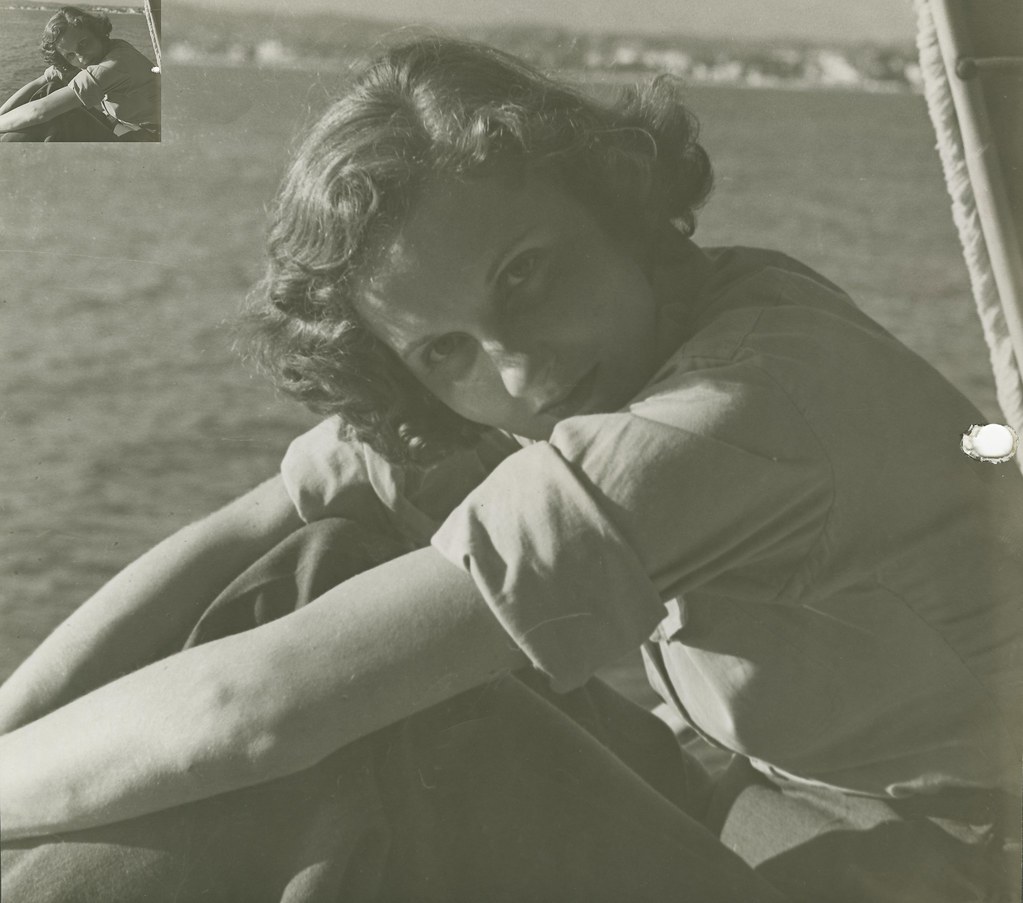The Education of Alice B. Sheldon: Debutant, Bohemian, Military Officer, CIA Analyst, PhD
As a young adult, Alice Hastings Bradley studied drawing and painting. Her school years were marked by wide swings from intense production to deep depression, from social garrulousness to isolation—patterns to be repeated throughout her life.
In December 1934, at age nineteen, Alice sabotaged her social debut by eloping with the first boy she felt at ease with, Princeton student William Davey. They would spend six and a half turbulent years together in an open, Bohemian marriage. For artists, promiscuity signified sophistication and radicalness, and both had affairs—Alice with both men and women. But sexual daring did not improve her knowledge of how to achieve the active, “masculine” agency she longed for. A drunken note she secretly scribbled in a sketchbook said, “I am no damned woman wasteful god not to have made me a man.”
Bill Davey was a brilliant writer in his own right; “as tempestuous and well-read and taste-ridden as myself,” Alice once observed. But more and more, his alcoholism turned their frequent arguments toward physical violence.
Deciding to leave both painting and her abusive husband in 1941, Alice returned to her parents’ home with few options for an independent life. Everything changed, however, with the early-December attack on Pearl Harbor. With so many young men rushing to join the armed forces, the wartime economy opened up new opportunities for intelligent, career-minded women. But Alice did not want a desk or factory job, nor did she feel called to nursing. She wanted a place in the action overseas.
In August 1942, Alice Bradley Davey enlisted in the newly-formed Women’s Army Auxiliary Corps, traveled to Fort Des Moines for training, and found to her delight a place where women were in charge. “What an awakening,” she wrote in her journal. “Women seen for the first time at ease, unself-conscious, swaggering or thoughtful, sizing everything up openly, businesslike, all personalities all unbending and unafraid.”
After basic training, Alice went to Officer Candidate School and, in January 1943, became Third Officer Davey, the WAAC equivalent of a lieutenant. Assigned to clerical work, she soon grew bored. After reading an article about the new British military specialty of photointerpretation, she began volunteering at the U.S. Army Air Forces (USAAF) photo-intelligence department. She was formally transferred to photo-intelligence in December 1943, becoming the first woman to work in the division, and promoted to captain the following summer.
On V-E Day—May 8, 1945—Captain Alice Davey got her wish: she received orders to report for a special assignment with air force intelligence in Europe.
As the war in Europe concluded, all branches of the military were competing to get information and informants out of the ruins of the Third Reich. The USAAF had set up an “exploitation division,” headed by Colonel Huntington “Ting” Sheldon. Among the fifty assorted specialists sent by the Pentagon, Alice was the only photo-interpreter and the only woman. Soon after meeting her, Ting Sheldon fell in love.
At first glance, Alice at age 29 was not a logical match with Ting—a twice-divorced, 43-year-old man with three children. But beneath their social facades, both were brilliant outsiders who had experimented with how to live, shared similar ideals, and gave each other support and independence. She became Mrs. Alice Bradley Sheldon on September 22, 1945.
Alice and Ting came home from the war in January 1946 and were discharged in April. Finding civilian work proved difficult, so they bought a New Jersey chicken hatchery in 1948. After a few years, however, the romance of farming wore thin. When the CIA added a photo-intelligence section in 1952, Alice and Ting sold the farm and took jobs at the Agency. Ting would do important CIA work for the next seventeen years, while Alice had a more modest three-year career as an intelligence analyst. However brief, her time with the Agency fed her fantasies of a covert life, later helping her to shape the persona of James Tiptree, Jr.
Alice had long been fascinated by the psychology of visual perception and, on her own, had intensively researched its role in aesthetic judgments. In 1956, at age 40, she decided to return to school. After earning a Bachelor’s degree from American University in 1959, she entered the doctoral program in psychology at George Washington University. After finishing coursework in 1963, her research on human and animal perception evolved into a study of how we react to novelty as a function of context. She wrote in her dissertation, “Adult humans who appear different, behave in a novel manner, or propose new views have learned to expect averse reactions from their fellow men.”
In February 1967, at age 51, she defended her thesis and became Dr. Alice B. Sheldon.



Comments by Tatiana Bryant